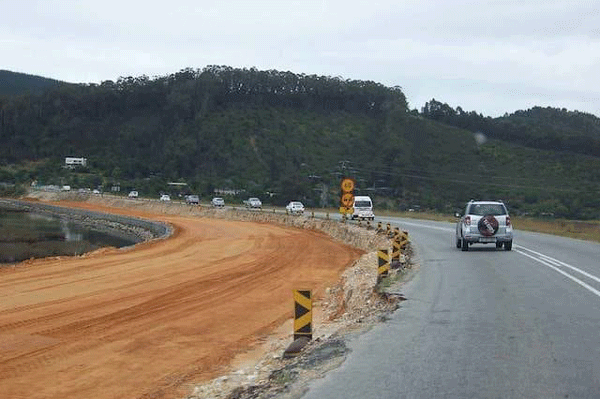
About 5% of the estimated 980 000 unemployed individuals in the Eastern Cape could gain job opportunities through the N2 Wild Coast Toll Road (N2WCTR).
The South African National Roads Agency (SOC) Limited (SANRAL) announced that as many as 55 000 people will be employed during its construction.
Craig McLachlan, SANRAL’s N2WCTR Project Manager said: “The Eastern Cape’s official unemployment rate stands at 28.6%, expanded unemployment extends to 44.5% and over two million grants are being paid out every month.
“As bad as this figure is, it is an average and hides even more horrifying local statistics, with certain rural municipalities such as Ingquza Hill (based around Lusikisiki, Flagstaff and Holy Cross) having unemployment figures in excess of 85%.”
The N2WCTR is set to alleviate some of the pressure experienced by many as a result of this unemployment.
“While some of the estimated 55 000 jobs to be created will ensure people that are currently employed stay employed, a significant portion will be new jobs.
“Potentially, as much as 5% of the estimated 980 000 unemployed individuals in the Eastern Cape could gain some employment through the project and its spin offs,” said McLachlan.
How the budget will be spent
Approximately 5% of the budget for the 112 kilometer greenfields section of the N2WCTR will be spent on labour. More than R400-million will be allocated to wages for unskilled, semi-skilled and skilled workers employed directly on the N2WCTR project.
A further R1.5-billion is destined for local SMMEs comprising of local contractors and local suppliers of goods and services to the road and bridge construction projects.
McLachlan said: “SANRAL’s direct job creation forecast is 1.8 million man-days or 8 000 Full Time Equivalent (FTE) jobs over the construction period of four to five years. These jobs will not just be for unskilled labour but will include semi-skilled and skilled jobs as well, including local builders, engineers, grader operators, excavator operators, welders, mechanics, foremen, drivers, and bricklayers, to name but a few.
“According to economic employment opportunity propensities indices for road construction projects, up to 25 000 additional indirect FTE jobs will be created by subcontractors and suppliers over the construction period. These indirect jobs will be derived from a variety of fields: security, plant hire, manufacturing, catering, logistics, and aggregate and hard rock products, among others, and most will be located in the Eastern Cape.”
Opening up opportunities
Adding to this, he noted the new route creates access to the Pondoland area and forms a shorter and faster link between KZN and the Eastern Cape. It will help promote local and regional economic growth in a number of alternate areas including manufacturing, transportation and logistics, agriculture, agri-processing, and tourism.
McLachlan concluded: “Tourism, particularly, is seen as a high growth potential area. The 2008 specialist tourism study done as part of the EIA report estimated that over a 10-year period post construction, an additional 674 000 tourists would be brought to the Eastern Cape as a direct result of the refurbishment of the N2WCTR.
“Such an increase will require over 1 050 new beds in the hospitality industry of which approximately 900 would be in the Transkei area. This large increase in visitors could lead to a growth in local employment figures of up to 22 450 people over the first 10 years after the route is opened.”

